More articles
For most "old car" applications the valve stem hole in the wheel rims come in 3 sizes, which are nominally:
- 8mm diameter, observed on some small and Voiturette cars (as well as motorcycles which often had the same tyre sizes). This 8mm size hole will have an inner tube with what is called either a "TR4" or "TR6" metal stem, both of these stems being virtually identical. At Blockley we use the TR6 stem because the patch that attaches to the tube has a larger surface area, and we like this.
- 11.5 mm (0.453") diameter. The most common size we all know on our cars. This hole size is for use with rubber stem ("TR13") or the metal stem ("TR11") valved inner tubes.
- 16 mm (0.635") diameter , the largest of the sizes. This fits a rubber TR15 stemmed inner tube. Popular on tractors and some post war cars of the 1940's and 1950's. We supply a well fitting adapter / grommet / collar that slips over the TR13 stem to increase it to the bigger TR15 size making it a snug fit in the hole in the wheel, for use in these wheels that have the 16mm hole.
This plastic adapter also has the advantage of additional protection for the rubber stem from any potential sharpness at the juncture of where the hole exits the rim.
The valve stem terms mentioned above TR4, TR6, TR11, TR13, TR15 etc were the numbers assigned to the different valve stems by the company Schrader, who started up in the 1890's with their invention that is still going strong!
So when there is a choice with the Blockley inner tubes, why use a metal stemmed TR11 tube over the TR13 rubber stem variety?
Historically valve stems from the dawn of motoring were always metal, bolted into the inner tube. As time went on the metal valve stem became vulcanised onto the tube itself as part of a patch.
The metal "TR11" stem has two distinct advantages over the rubber "TR13" stem, which is why a metal stem is always preferred in arduous conditions or applications such as motor racing.
The first bonus of a metal "TR11" stem is that there is no risk of this stem chafing or being cut against the hole of the wheel rim in the case of any movement, particularly at the base where an annular brass nut remains on the tube stem.
The second advantage is that very very occasionally a fault can occur on any rubber stem where air can leak between the rubber and the inserted brass housing into which the valve is fixed, causing a slow deflation even though the valve itself is not leaking - something which just cannot ever occur with a solid TR11 stem.
All metal valve "TR11" valve stems used on our thick butyl Blockley Superior tubes are nickel plated, just as they were in period. We have not yet found an unplated original stem on an original period tube. And this is also the case with early veteran tubes. The nickel plating avoids the brass tarnishing and is just another bit of attention to detail, the way we like to do things at Blockley!
And finally mention should be made of the screw on valve cap, which should always be used to stop the ingress of dirt. At Blockley we supply all inner tubes with metal valve caps with a washer inside that will keep air in the tube, even if the valve fails. Having this good seal prevents the dirt as well as moisture contaminating the valve core.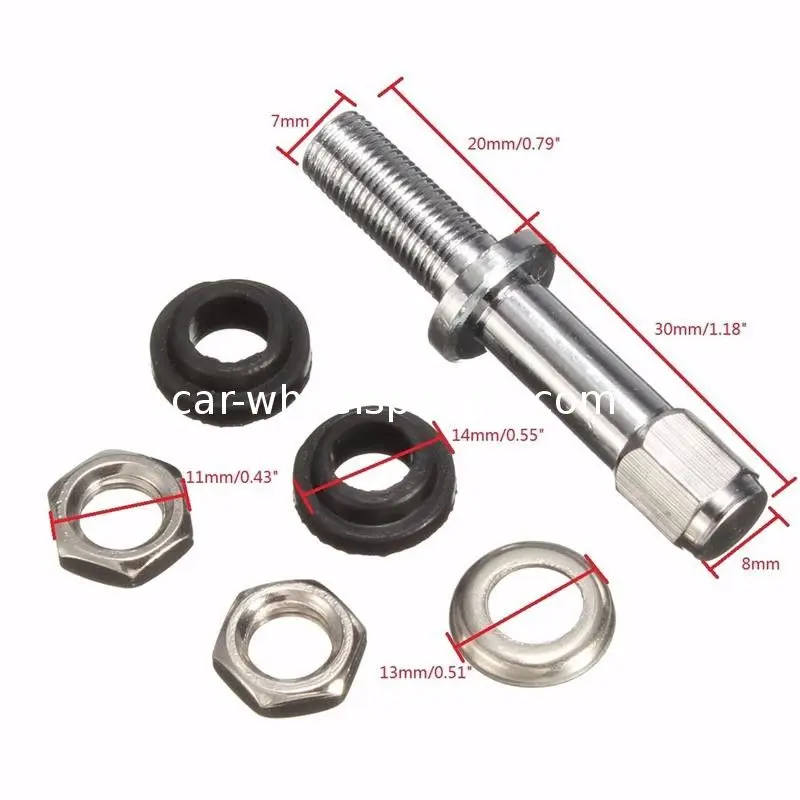
As a postscript, there is another popular valve stem used on Veteran and Edwardian cars using beaded edge tyres, or as they say in the USA "Clincher" tires, which carried on into Straight Sided tyres that came after, which have a stem diameter of 12mm. But this is a topic we can cover later.
While there are three main types of tire valves: rubber snap-in, high-pressure snap-in, and high-pressure metal clamp-in; which type is appropriate for the application depends on the vehicle, required tire inflation pressures, driving circumstances, and wheel design. The Tire and Rim Association in the United States have given valve design numbers to different types and sizes of valves.
Valves can be installed in any position on the wheel, from horizontal to vertical, to match the wheel’s appearance. To accommodate valve-mounted tire pressure monitoring system transmitters, the most common valve alignment is almost horizontal, employed by many wheel manufacturers.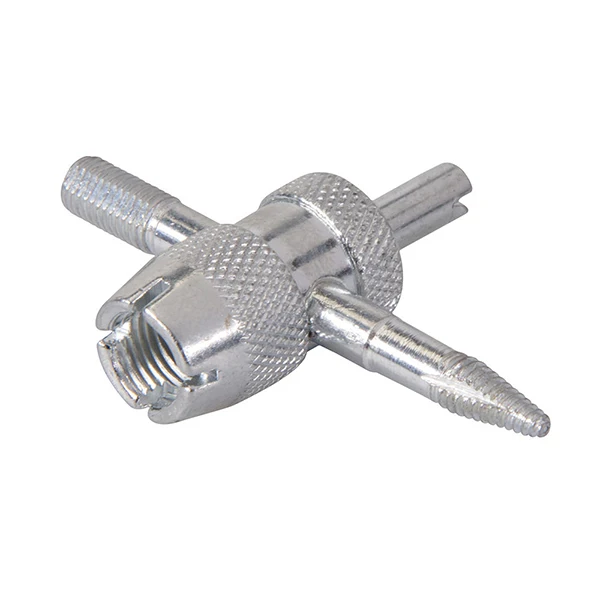
While tire valves can operate at any angle, valves mounted on a vertical axis and used at high speeds are more prone to lose pressure because of centripetal forces pushing the valve core and enabling air to escape. In our guide, you can find all valve stems the same size and which sized tire valve stem sizes fit your wheels.
By the end, you’ll see it’s much easier to get the right tire valve stems when you use a valve stem size chart. (Read Drywall Screw Sizes Chart)
It used to be that if the tubeless valve stem fit the hole in the wheel, it was the right one. This isn’t true, but it’s what they thought at the time. Today, that assumption could cause a lot of problems.
The tubeless valve stems that are in use today haven’t had many problems over the years. The huge popularity of tubeless tires today is proof that they work well and that the valve stems they need work well, too.
Increased inflation pressures and higher speed limits make selecting the proper valve stem extremely important.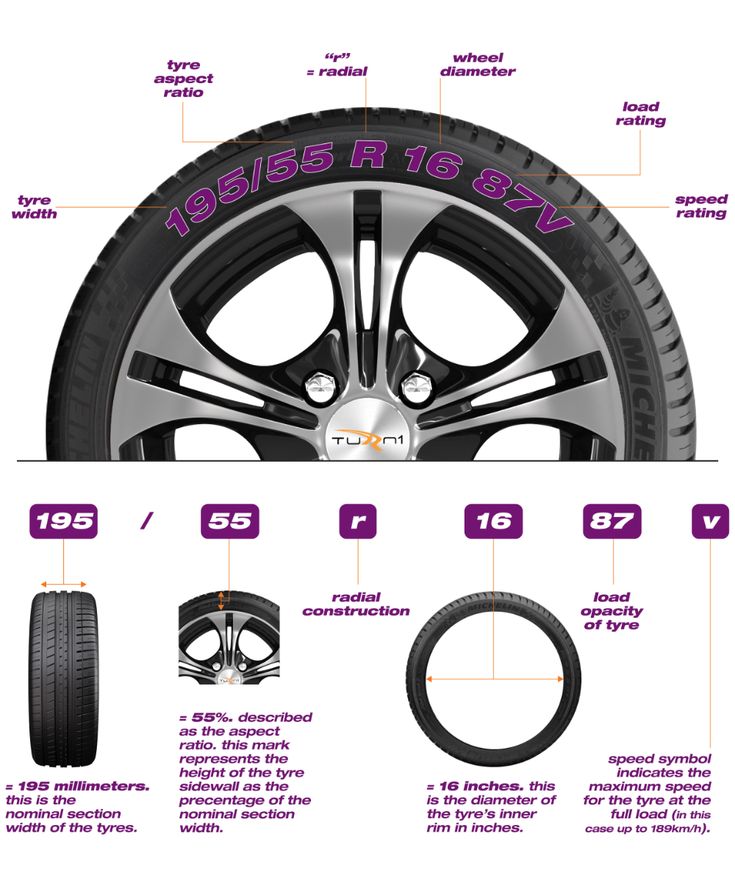
Light truck owners have told the International Tire and Rubber Association (ITRA) that their tires suddenly lose air, sometimes when they’re going at a high rate of speed. It turns out that these people were using the wrong valve stems.
In light-duty trucks, most of the complaints are about snap-in valve stems on tires with ply ratings of up to 95 pounds per square inch. Most of the problems are with TR413 or TR15 series valve stems (6.6 bars).
These tires are now called medium- or even heavy-duty truck and bus tires because they have a lot of plys and are made out of steel. But because they can carry a lot of weight, some tires are still made in the sizes we used to think of as commercial light truck tires.
It’s sometimes the same size as the valve stem hole in a wheel for a passenger car. First, the TR413 series valve stems were designed to handle inflation pressures up to 60 pounds per square inch (4.1 bars).
However, they can only handle 65 psi (4.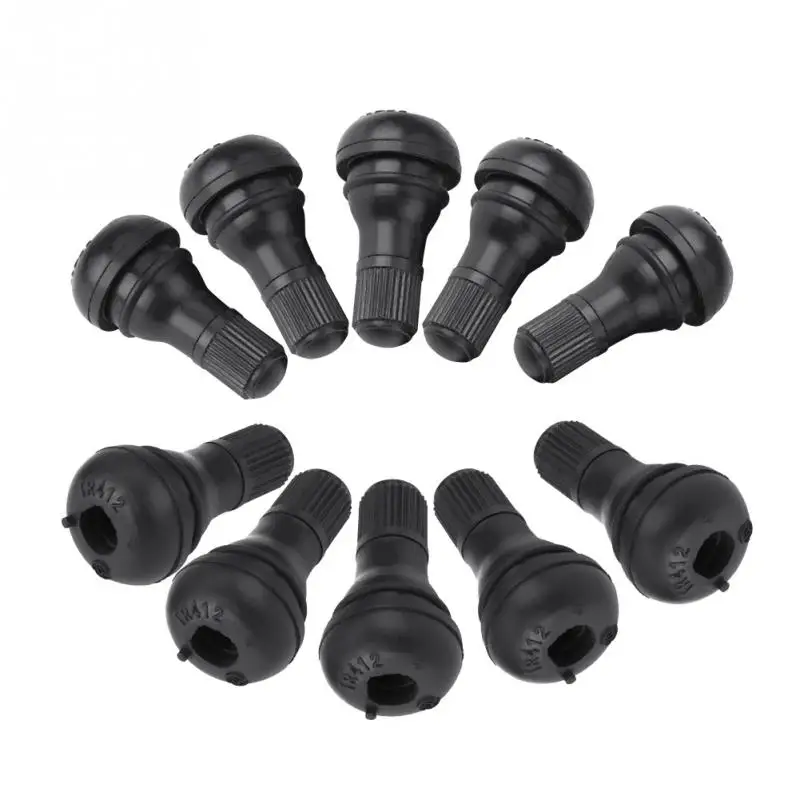 5 bars). Many old catalogs still in use say that the valve stems in the TR413 and TR415 series can only be used at 60 psi. This is not true.
5 bars). Many old catalogs still in use say that the valve stems in the TR413 and TR415 series can only be used at 60 psi. This is not true.
One of the most likely problems you may encounter with the TR413 and TR415 series valve stems at any inflation pressure above 65 psi is the vale stem running at a higher than average temperature due to hot weather or other similar condition.
This can cause the valve stem to crack, blow out the rim hole, or become unseated.
In most cases, this can be fixed by replacing the old valve stem with a TR600HP or TR801HP high-pressure snap-in valve stem. These valve stems can handle up to 100 psi (6.9 bars). Another good idea is to use a metal valve stem that can be clamped in and has a 200 psi rating (13.8 bars).
The TR600HP and TR602HP valve stems have holes that are .453 inches wide. The TR801HP and TR802HP stems have holes that are .625 inches wide. (Learn How To Test Water Heater Element)
On wheels with stem holes that are more than .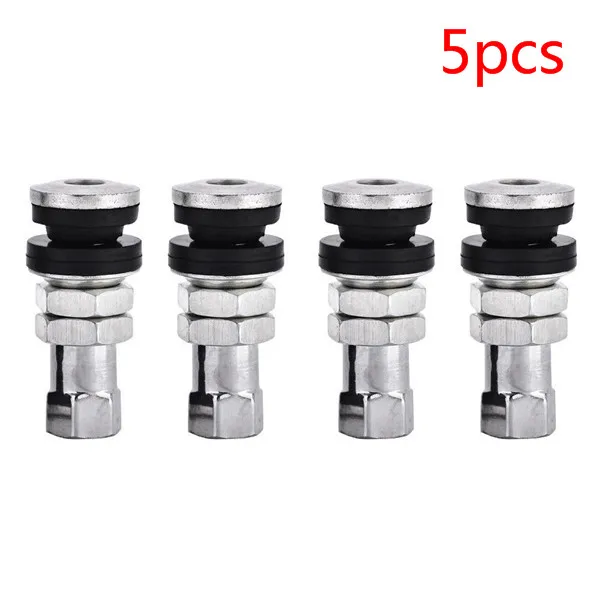 156 inches thick, the TR413 valve stem should not be used because it has a lower pressure.
156 inches thick, the TR413 valve stem should not be used because it has a lower pressure.
The TR600HP high-pressure valve stems can only be used on wheels with a stem hole thickness of less than.205 inches. The TR602HP, TR801HP, and TR802HP valves all have the same tolerance.
Metal valve stems must be used when the rim thickness at the stem hole is more than .205 inches. If the area around the hole is coined meets the requirements, the wheel can be thicker. However, you should use the stem that fits the wheel’s stem hole.
Metal valve extensions should never be used with the TR600HP and TR801HP series snap-in valves as the centrifugal force generated at high speeds by the added weight of the metal extension can break or crack the stem, causing it to unseat and result in a loss of air.
This can probably occur even if the inflation pressure is within the limits of the snap-in valve stem.
Only plastic extensions should be used on snap-in valve stems from the TR600HP or TR801HP series, which have snap-in parts.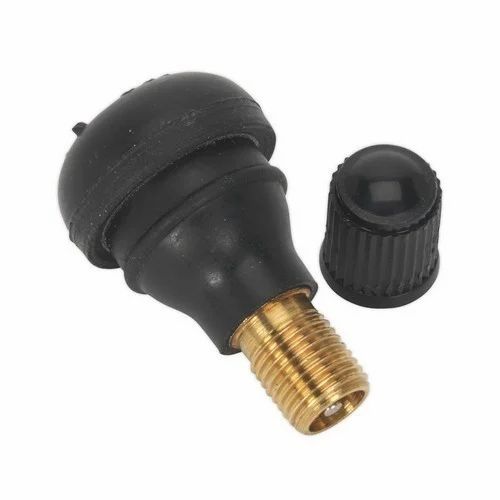 If you have valve stems that can be clamped into place with metal, you only need extensions made of metal. The metal extensions should not be longer than is necessary.
If you have valve stems that can be clamped into place with metal, you only need extensions made of metal. The metal extensions should not be longer than is necessary.
If a car is going to be used both on and off the road, it’s always best to use clamp-in valve stems made of metal that are as short as possible.
A lubricant that isn’t made from petroleum should be used on all snap-in valve stems before they are put in the stem hole.
In addition, the stem hole should be checked to make sure there are no sharp edges or metal slivers that could damage the stem. There should also be no rust, excessive paint drippings, or other buildup on the valve stem seating area.
If you follow procedures according to industry standards and still have problems losing air through the stem hole, check the specifications for the stem hole in the wheel, including the prementioned thickness limitations.
It might not be big enough to machine or coin around the stem hole on some wheels with a.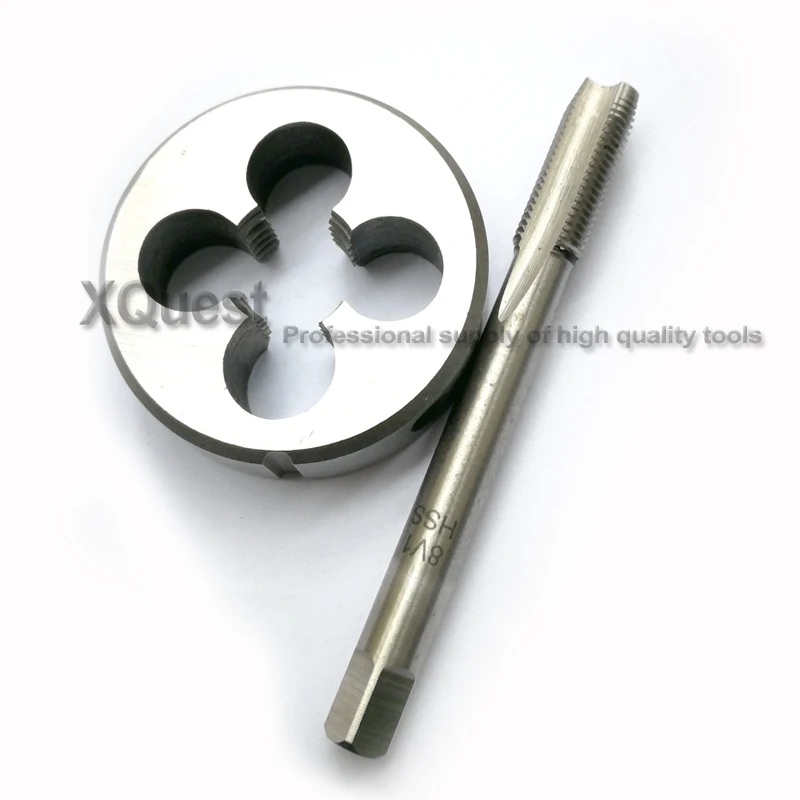 453-inch stem hole. On this type of wheel, the coined area must be at least.125 inches bigger than the valve hole.
453-inch stem hole. On this type of wheel, the coined area must be at least.125 inches bigger than the valve hole.
The Tire and Rim Association Yearbook has all the information you need about specifications. You can also ask your suppliers for help.
Never assume that the stem on the tire/wheel assembly you’re working on for a customer is the right one, even if it looks like it. (Learn How To Clean Concrete Without Pressure Washer)
Someone who handled the tire/wheel assembly before you may have made a mistake or failed to fit the valve stem to the hole size, air pressure, or application. Installing the right stem can be as important as matching the wheel parts on a wheel with a lot of parts.
While there are no real standard sizes, here are some examples of valve stems you can find.
TR13

TR15
TR 300
TR JS2
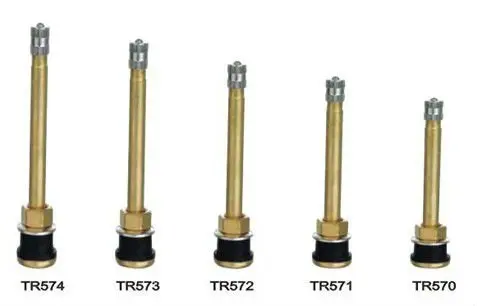
TR6
JS 89
Here are a few different varieties of valve stem types outside the above basic types.
Tubeless rubber snap-in valves have a maximum cold tire inflation pressure of 65 psi. They are suited for passenger cars, light-duty trailers, and light trucks, as well as autocross competition.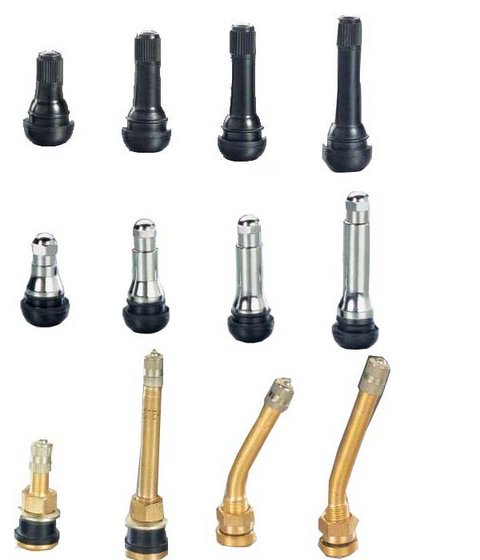
Rubber snap-in valves with effective lengths ranging from 7/8″ to 2-1/2″ accommodate either.453″ or.625″ diameter holes in the rim. (Find the Best Pressure Washer)
While most rubber snap-in valves have a plastic cover, some have chrome sleeves and metal caps to match the look of a custom or alloy wheels.
| Industry Valve Number | Max Inflation Pressure (PSI) | Effective Length (Inch) | Hole Diameter in Wheel (Inch) |
|---|---|---|---|
| 412 | 65 | 0.88 | 0.453 |
| 413 | 65 | 1.25 | 0.453 |
| 414 | 65 | 1.50 | 0.453 |
| 415 | 65 | 1.75 | 0.453 |
| 418 | 65 | 2.00 | 0.453 |
| 423 | 65 | 2.50 | 0.453 |
| 415 | 65 | 1.25 | 0.625 |
| 425 | 65 | 2.00 | 0.625 |
Tubeless high-pressure snap-in valves are designed for medium and heavy-duty trucks and trailers and must be used when the recommended cold tire inflation pressures exceed 65 psi.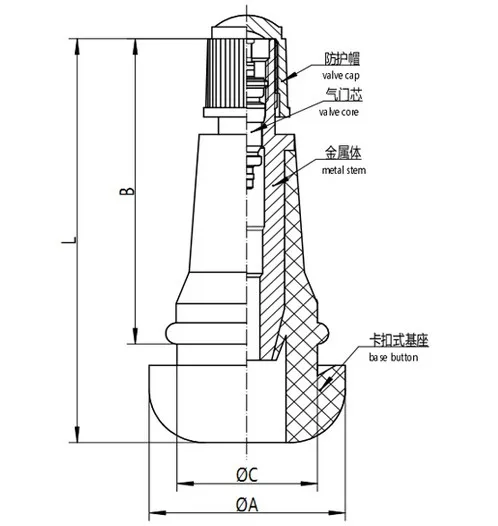
The maximum cold inflation pressure for.453″ rim holes are 80 psi, whereas the maximum cold inflation pressure for.625″ rim holes are 100 psi.
In steel wheels, high-pressure snap-in valves have a thicker rubber base with a metal barrel and a plastic cap. This type of valve is often found in these types of wheels. There are effective lengths that range from 1-1/4″ to 2″ long.
| Industry Valve Number | Max Inflation Pressure (PSI) | Effective Length (Inch) | Hole Diameter in Wheel (Inch) |
|---|---|---|---|
| 600HP | 80 | 1.27 | 0.453 |
| 602HP | 80 | 2.00 | 0.453 |
| 801HP | 100 | 1.31 | 0.625 |
| 802HP | 100 | 2.00 | 0.625 |
High-pressure metal clamp-in valves can be used with almost any wheel. They are recommended for all track activities and when the speed of the vehicle is going to be more than 130 mph.
They are recommended for all track activities and when the speed of the vehicle is going to be more than 130 mph.
When the retaining nut on metal clamp-in valves is tightened, a rubber grommet seals against the wheel.
While metal clamp-in valve design and styling can result in retaining nuts being hidden inside the wheel or visible outside, those with the retaining nut on the outside have the advantage of examining and modifying retaining nut tightness without having to remove the tire from the wheel.
Metal clamp-in valves have a maximum operating pressure of 200 psi and are available in rim sizes 0.453″ or 0.625″, as well as custom sizes like 6mm (.236″) or 8mm (.315″).
In addition, metal clamp-in valves have a metal cap available in straight or bent configurations to fit wheels with unusual forms.
They have effective lengths ranging from flush to 2″ and in straight or bent configurations to fit wheels with unique geometries. For racing applications, low-profile and lightweight alloy clamp-in valves are also available.
Regardless of valve type, the valve core is the primary sealing component and should be fitted snugly into the valve core chamber. Valve cores are available in two lengths: short and long, with the latter being favored for high-performance applications.
Valve cores are offered in nickel-plated and brass finishes. A valve stem will experience galvanic corrosion if a standard brass valve core is used in aluminum; the brass valve core will eventually seize in the valve’s aluminum barrel.
Nickel-plated valve cores must instead of brass valve cores in the aluminum valve stems of tire pressure monitoring sensors to help avoid galvanic corrosion.
When inflating a tire, all valve cores have a seal coupled to a moveable, spring-loaded pin that permits pressurized air to flow while allowing air to escape when the pin is depressed to unseat the seal.
While valve cores can withstand a working pressure of 300 psi, grit, sand, and moisture must be avoided.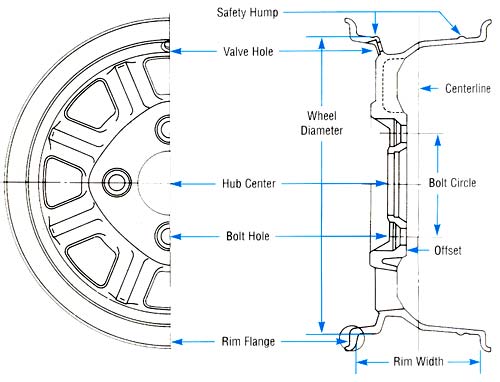 Grit and sand may prevent valve cores from properly closing, and moisture can freeze and undermine the seal in freezing conditions.
Grit and sand may prevent valve cores from properly closing, and moisture can freeze and undermine the seal in freezing conditions.
Valve caps should always be used for various reasons, including high-speed pressure loss and core contamination.
If the cap on tire valve is compromised, the valve cap acts as a backup seal, preventing air from escaping.
While utilizing valve caps may make checking tire pressures in the pits at a racetrack take longer, the consequences of a tire losing pressure are far harsher.
Valve caps come in three different types: plastic dome, metal dome, and a metal “screwdriver” design for tightening and loosening valve cores.
If you want to drive on the racetrack, you’ll need metal valve caps instead of plastic dome caps. This is because racetracks can get very hot, and plastic dome caps can’t handle that.
Valve caps are knurled to make tightening and loosening easier, and some metal caps include hex head designs.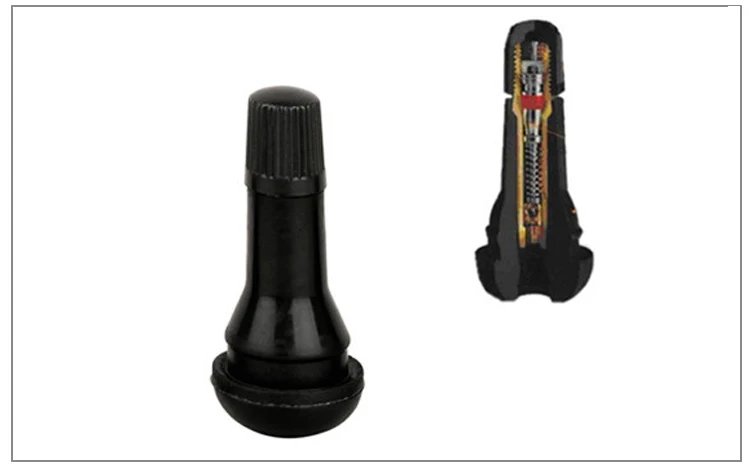 To completely seal the valve, metal caps utilize a rubber washer or o-ring.
To completely seal the valve, metal caps utilize a rubber washer or o-ring.
If the cap on the tire valve cap is missing, squeeze the valve core briefly to release a small amount of air before monitoring or adding air pressure. This will allow debris to be blown out of the valve by the pressurized air inside the tire.
It’s more challenging to avoid wetness because it’s sometimes difficult to get a steady dry air source. Therefore, checking or adding tire inflation pressure outside during a blizzard is not suggested unless required.
Vehicles with wheel covers may also use nylon or metal extensions ranging in length from 1/2″ to 2″ to facilitate checking and adjusting tire pressures easier.
Mud, ice, and snow have packed into the tips of the nylon extensions and enable air to escape because they are exposed to the weather.
If the nylon extensions scrape against a curb, the damaged tip can depress the valve core, escaping air. Ideally, tire valves of adequate length or metal extensions threaded to take a valve cap should be used.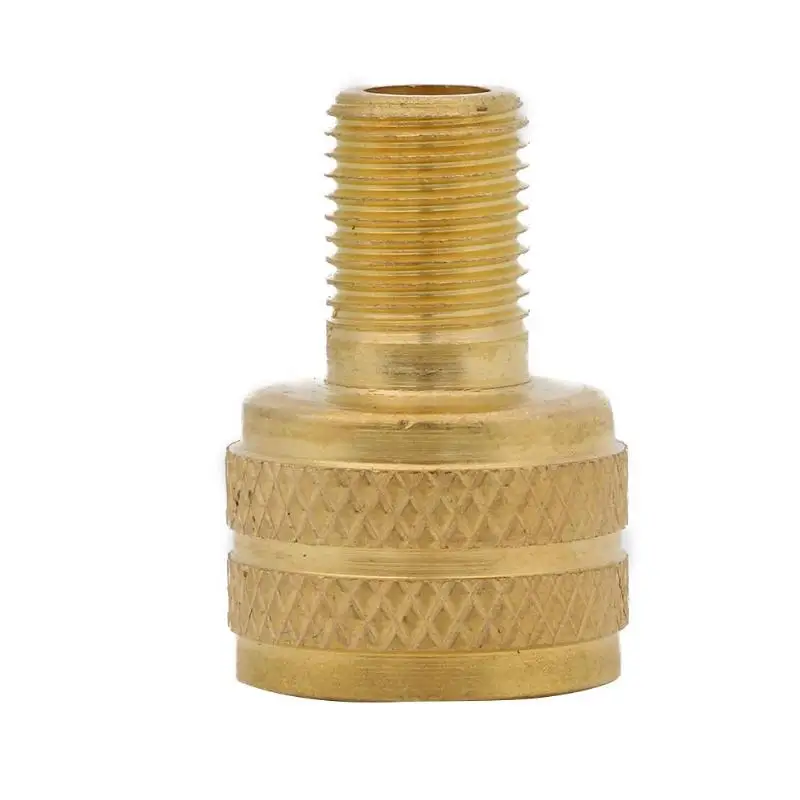
Tire valves should be inspected and changed if any cracking emerges. Rubber deteriorates with time, and tire valves are not intended to resist degradation throughout the life of two standard tires in typical service.
According to industry standards, tire valves should be replaced whenever new tires are mounted.
While Track & Competition DOT tires may only last a few weekends, the metal clamp-in tire valves should be replaced every other year.
Heat delivered to the wheels from the brakes is much higher than in everyday use, and even any valve type could suffer.
Even if you have these on a light-duty trailer, even if the inner tube or tire is fine, the tire valve could degrade because of the weather no matter how much you use your trailer.
Metal clamps or rubber snap-in valves are used to hold sensors and transmitters in place in many direct tire pressure monitoring systems (TPMS).
The threaded insert at the base of these distinctive metal clamp-in valves accepts the bolt that connects the sensor/transmitter to the valve.
Often, motorists pay attention only to tire tread wear, control the condition of rubber and its durability, but do not remember about valves. However, such a very important part also needs to be replaced, as it experiences a lot of stress with every movement of the car.
Contents
The wheel valve is one of the most important elements of tubeless tires. It is a check valve. This detachable structure is designed to force air into the wheel and prevent it from leaking. This part also maintains a single pressure throughout the tire.
Help. The valve is also called a nipple. This word comes from the English "nipple", which translates as a nipple.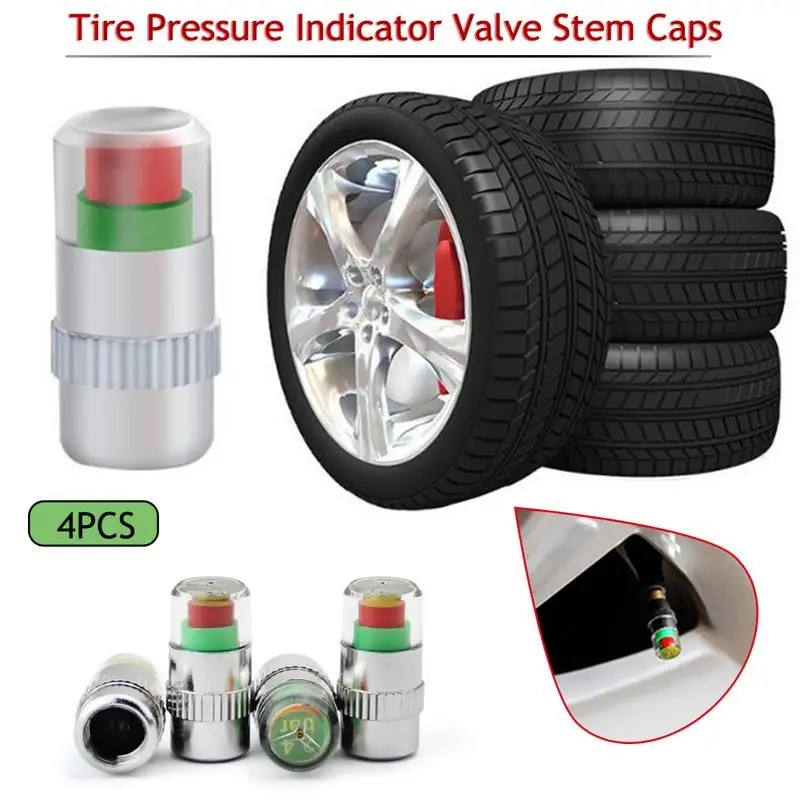
A standard tubeless tire valve consists of three parts: a cap, a spool and a body.
There are three types of nipple body:
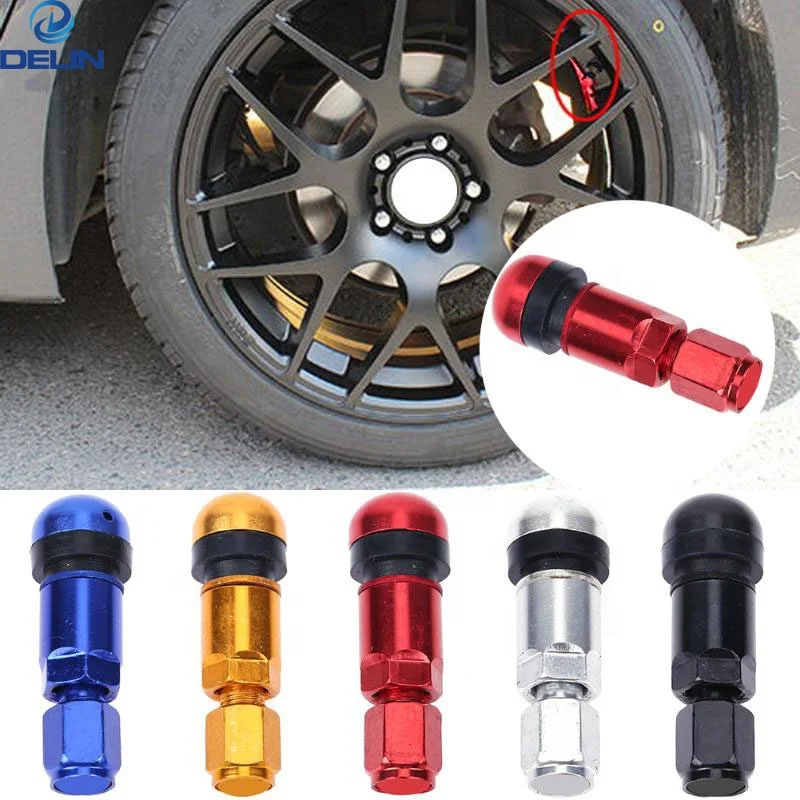
Attention! Professionals recommend installing hidden body valves only on alloy wheels.
The spool is the device located in the nipple and acting as a shut-off valve . The principle of its work is very simple. It connects two cavities with different atmospheric pressure and does not allow air to pass from one cavity to another.
On vehicles, the locking device operates by shifting the sliding element. This design will allow air to enter when the tire is inflated and will not release it back even if the inflation stops abruptly.
There are 3 types of spool that fit:
Usually, this element of the nipple is considered decorative.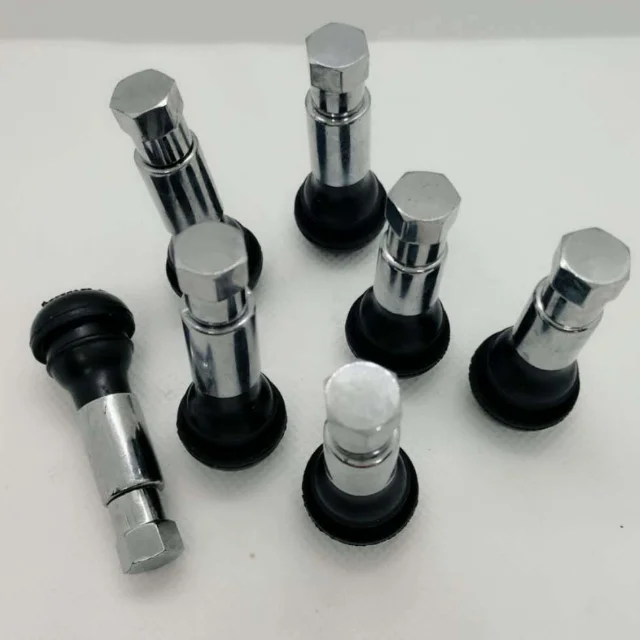 But despite the beauty, it has an important function. The cap protects the valve from dirt , because cleanliness preserves the quality and life of the nipple. To secure the element, you just need to screw it onto the nipple rod.
But despite the beauty, it has an important function. The cap protects the valve from dirt , because cleanliness preserves the quality and life of the nipple. To secure the element, you just need to screw it onto the nipple rod.
Caution! Always make sure that the caps are on the tires.
This element is made of metal and plastic. Despite the fact that many car owners prefer metal caps, plastic caps are much more practical. The metal element can be welded to the rest of the valve structure under the influence of salts and other reagents or freeze in winter, which will lead to a complete replacement of the valve.
Nipples come in 3 types:
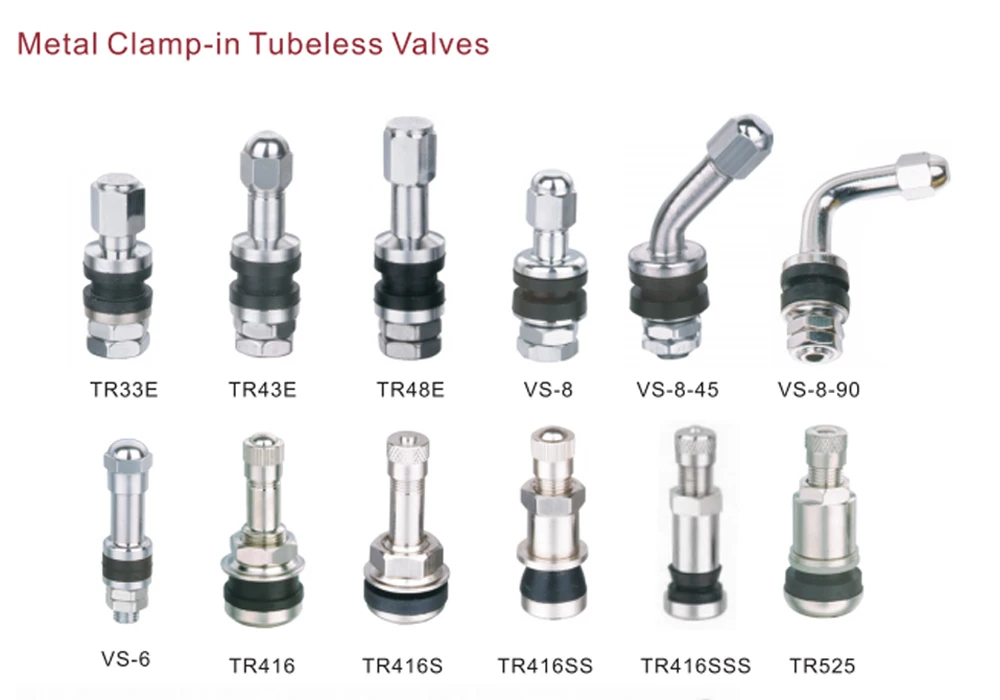 Very short-lived, so you need to constantly monitor its condition.
Very short-lived, so you need to constantly monitor its condition. When choosing a valve, consider the size of the wheel of the car, as well as the class of the car. Standard length of produced nipples can be 33, 42.5, 48.5, 60.5 mm . Hole diameter is available in 2 types: 11.3 and 15.7 mm .
Reference. TR is a popular name for valves that meet all current international standards. The larger the number after it, the longer the valve.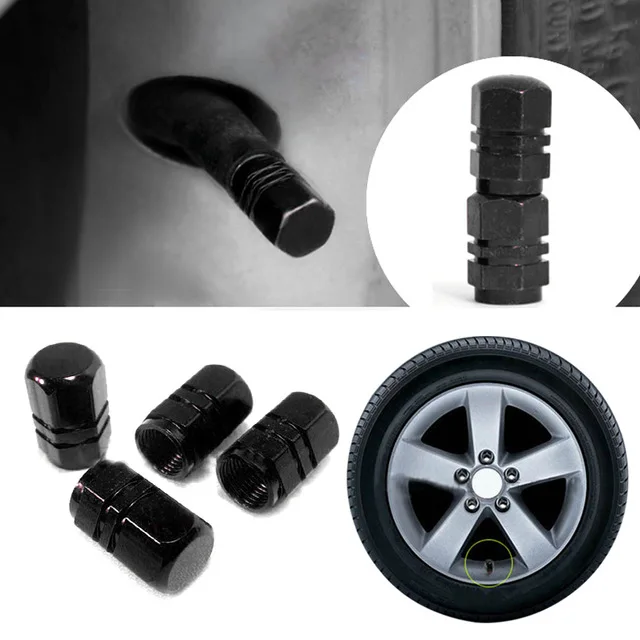
The most common valves are TR414 and TR414C. The main difference between them is only that with a valve marked C it has a chrome trim and a higher price. Due to the similarity in color, the TR414C nipple is placed on forged or chrome-plated steel, and the TR414 is placed on stamped wheels.
In addition to these universal models, there are also valves with such articles as:
Valves for various reasons quite often become unusable and require replacement. In order not to rush to the nearest auto repair shop every time, you can install a new valve yourself. To do this, you will need tools such as a jack, pry bar, pliers and a wheelbrace.
In order not to rush to the nearest auto repair shop every time, you can install a new valve yourself. To do this, you will need tools such as a jack, pry bar, pliers and a wheelbrace.
Step by step to replace :
Attention! If the release process is difficult and the wheel cannot be removed, the pry bar may be tapped with extreme care. It is important not to damage the disc.
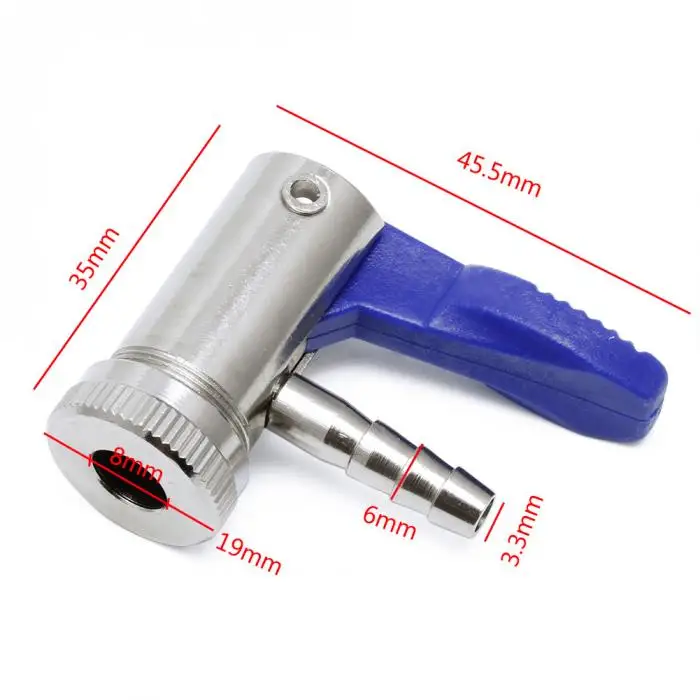
A short drive will help you check the installation. If everything was installed correctly and the nipple is not defective, reinstallation is not required.
Video on how to change the nipple:
The valve is one of the important components of tubeless tires. It must be remembered that all parts of the car can wear out and require replacement sooner or later, and nipples are just such parts. It is important to choose the right valves and change them in time.
Tires make it possible to dampen minor road irregularities much more effectively, reducing the load on the unsprung parts of the suspension. Tires improve traction. One of the components of the mounted wheels is the valve.
The wheel valve is a non-return valve that allows air to be forced into the tire.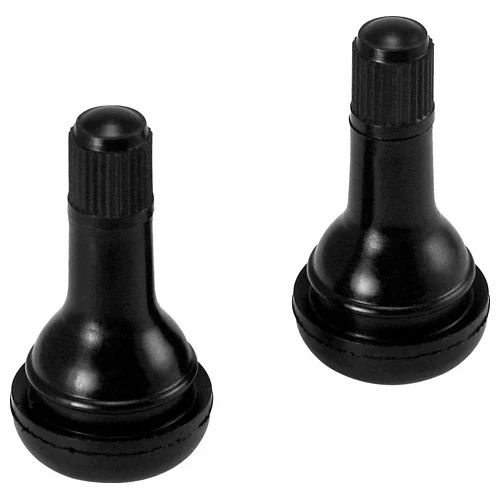 In addition, the part does not release the pressurized pressure from the tire. There are many different types of valves. It is sometimes referred to as the "nipple".
In addition, the part does not release the pressurized pressure from the tire. There are many different types of valves. It is sometimes referred to as the "nipple".
Part consists of several elements:
Each of the listed parts has its own characteristics.
When choosing a valve, it is worth remembering that serious loads fall on it during operation. This part must be selected very carefully to avoid safety problems.
The valve is only used on tubeless tyres. On chamber tires, the valve is part of the chamber without separating from it.
The valves are available in several body styles. In total, three options can be found on sale:
Let's analyze the types of valves in more detail.
Rubber "nipples" are the most common. They can be installed on both stamping and alloy wheels. Usually withstand up to 4.5 atm. There are models of different lengths. Not afraid of temperature changes.
Demountable consists of several components that are assembled during installation. Gaskets are included with the kit. Made of steel and chrome plated. Practically not afraid of exposure to reagents, temperature changes, water. Since they are made of metal, they can withstand heavy loads perfectly.
Concealed valve made of metal. Technically similar to collapsible. Differs in the absence of a rod for pumping. The spool is placed inside the element that secures the "nipple" to the rim. They are used on high-speed cars, recommended for installation on alloy wheels.
The shut-off device in the valve is a spool. It is worth understanding how this constructive element is arranged. Technically, it allows you to connect cavities with different pressures, while not letting air through from one side to the other.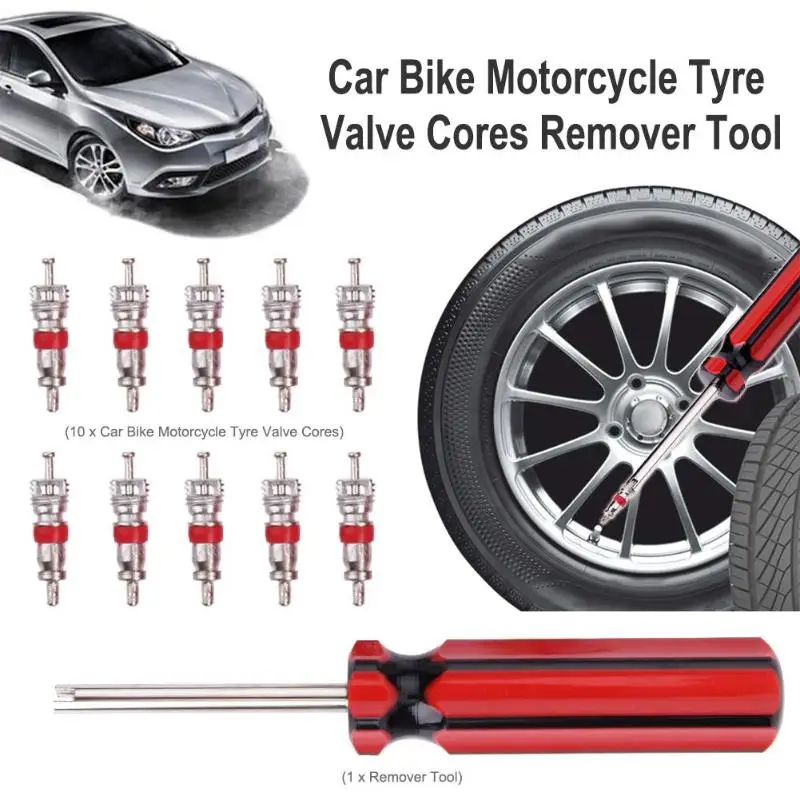 The wheel nipple of a passenger car is somewhat different from a similar device for bicycles, although it has a general principle of operation.
The wheel nipple of a passenger car is somewhat different from a similar device for bicycles, although it has a general principle of operation.
The spool operates due to the displacement of the movable element relative to the main part. As a result, it can allow air to enter the tire when inflated, but does not let air back at all once inflation is stopped. If necessary, by pressing the spool, you can bleed some of the air.
There are the following types of spool.
The cap is often considered a decorative element, although it has an important function. The cap protects the nipple from dirt. Cleanliness allows the valve to perform significantly longer. Therefore, be sure to look for the presence of caps on the wheels. They are attached by simply screwing onto the “nipple” bar.
Now on sale you can find plastic and metal caps.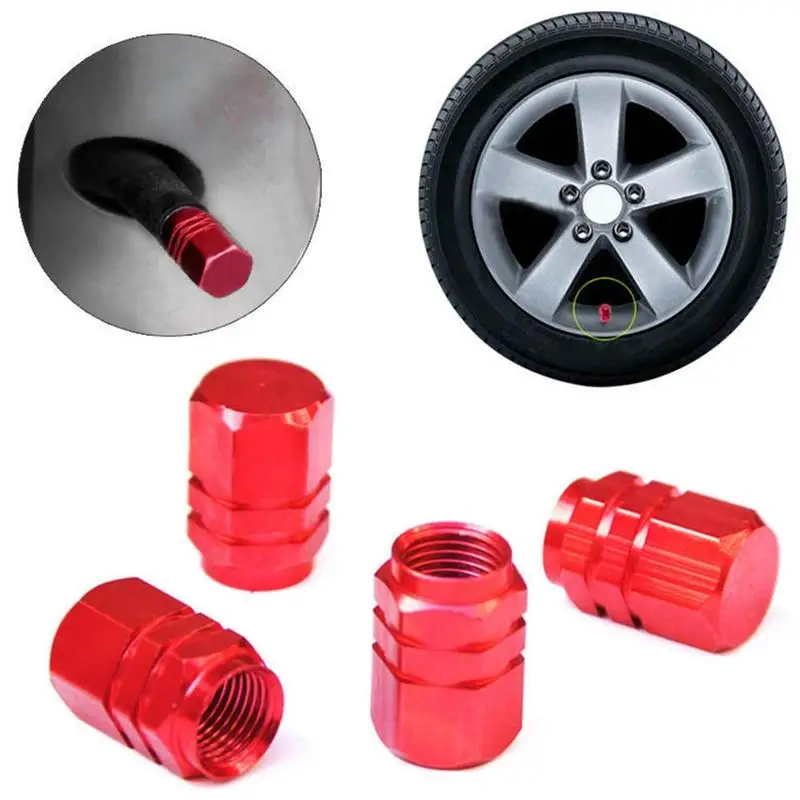 Often drivers prefer to buy metal caps, especially if the rim is chrome plated. In fact, it is better to choose the plastic option. Metal can freeze to the valve in winter, or simply boil under the influence of reagents. This will necessitate a complete replacement of the nipple.
Often drivers prefer to buy metal caps, especially if the rim is chrome plated. In fact, it is better to choose the plastic option. Metal can freeze to the valve in winter, or simply boil under the influence of reagents. This will necessitate a complete replacement of the nipple.
If the cap is green, the tire is filled with nitrogen.
When deciding which nipple to choose, it is worth considering - the size may be different. First of all, you should look at the length. On sale you can find the following dimensions (millimeters):
When choosing a valve by size, it is worth considering the disk used, only in this way can you decide which one is better. In addition, it is worth considering the diameter, on sale you can find valves for the width (millimeters):
To choose the right part, you should look at the marking. Then your rubber will get the most suitable valve. We list the main varieties.
Then your rubber will get the most suitable valve. We list the main varieties.
Sometimes you can see an additional letter "C" in the marking. It denotes a chrome-plated part body.
Use only TR418 nipples for cargo transport. Do not use standard valves.
To correctly answer the question of how to choose a valve, it must be taken into account that they can have different working pressures.